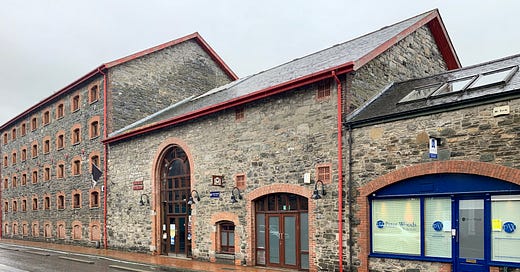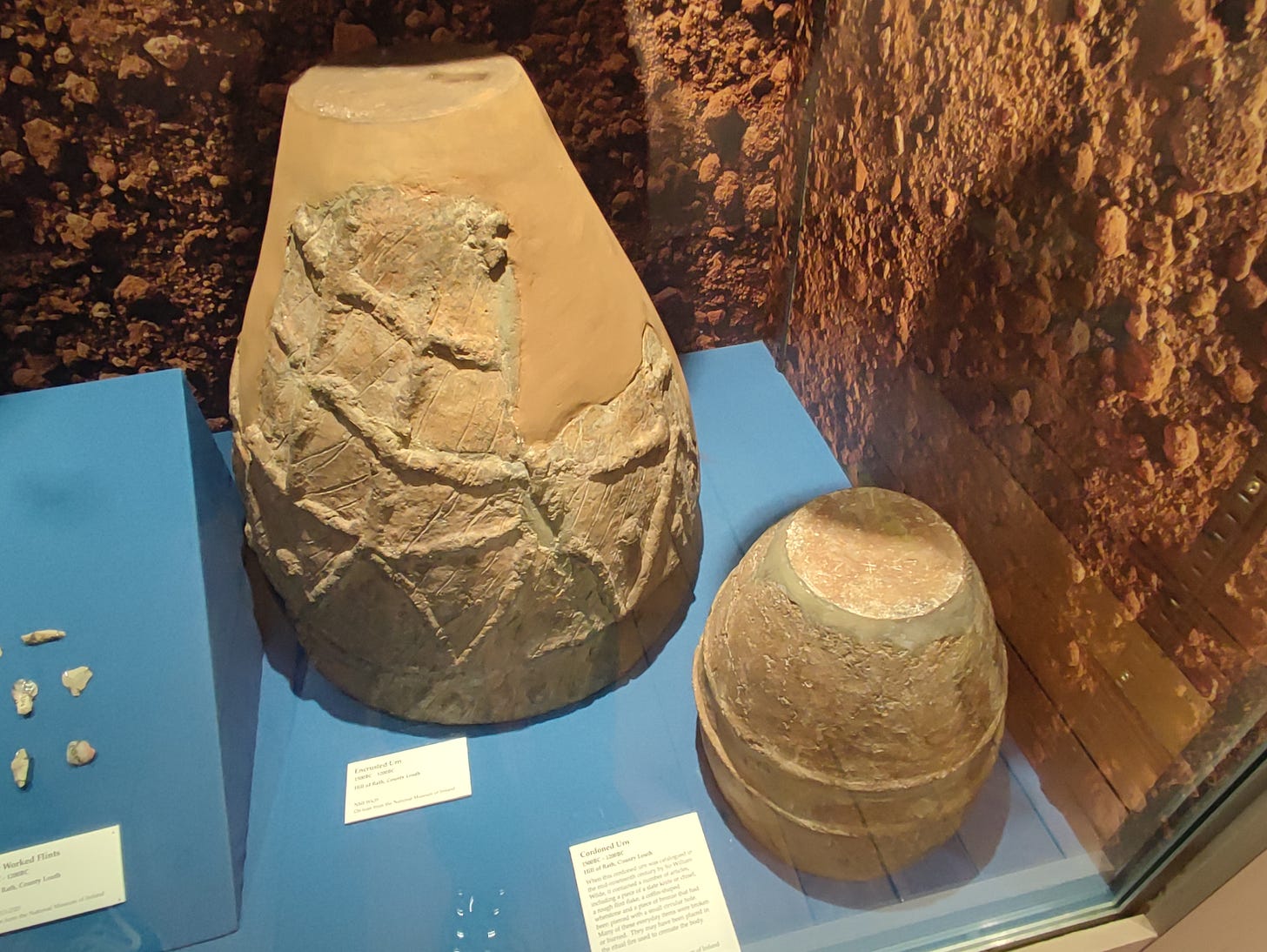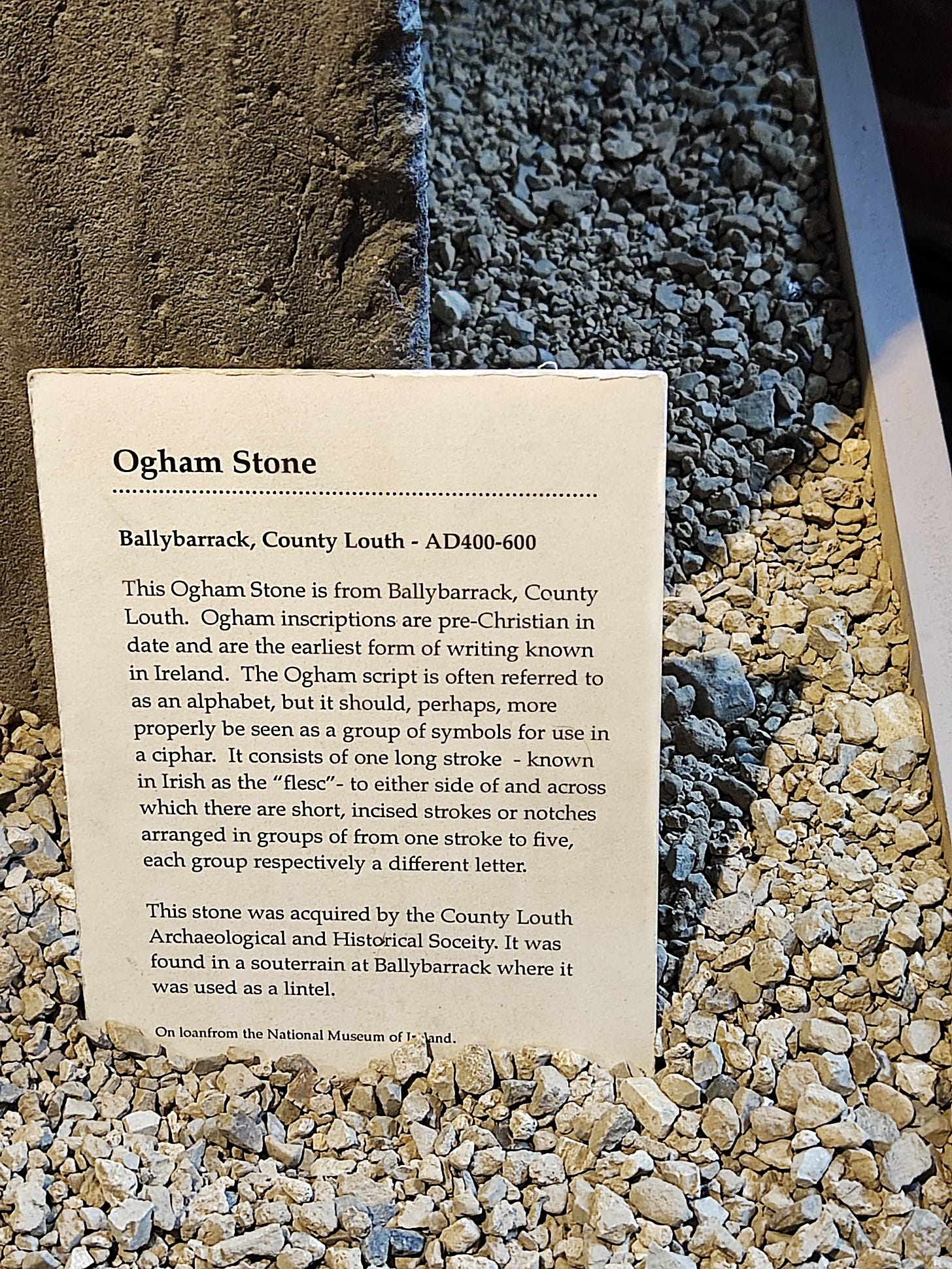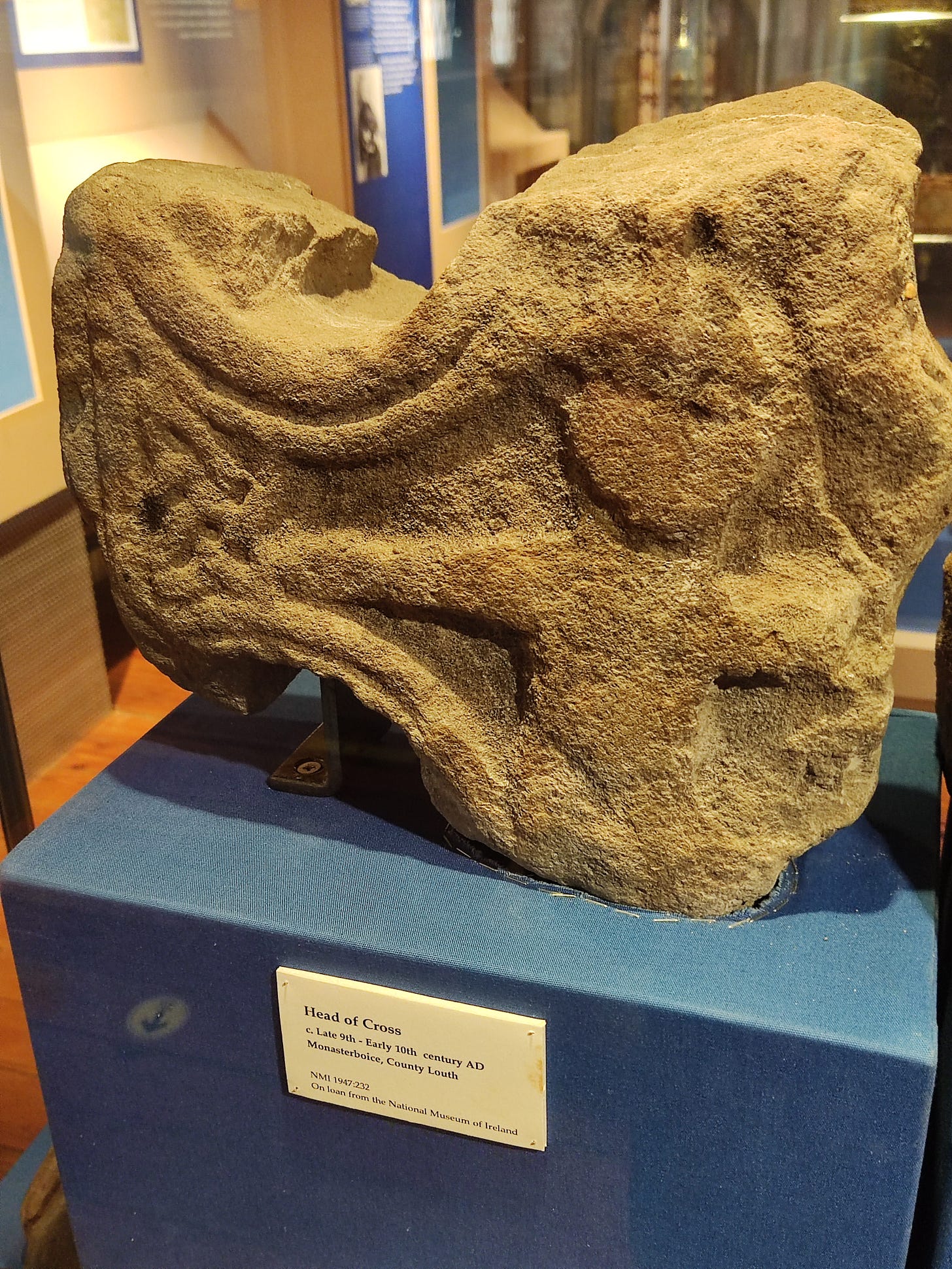County Museum, Dundalk Co. Louth
Cross fragments, brass memorial plaques, ogham stones and much more besides - this museum was well worth the visit
During the summer of 2022 I visited Louth County Museum, which is located in Dundalk, one of the two principal towns (along with Drogheda) in Co. Louth. I had been meaning to visit for many years, but had never gotten around to it.
The museum has a wide-ranging collection covering many aspects of the history of Louth, from neolithic and pre-historic times to the 20th century. The museum building itself is of some industrial and architectural interest, being a refurbished grain store that was once attached to a distillery.

There are far too many exhibits (including interactive and hands-on ones, ideal for children) to discuss here so I will select just a few to highlight below. I have also included a link to a video of a lecture by Brian Walsh, the Curator of the County Museum. The lecture is about the museum and some of the highlights of its collection. The lecture was recorded during an online presentation by Mr. Walsh on 15 November 2021 for the County Louth Archaeological and Historical Society and is available on the CLAHS Youtube channel.
Bronze Age Burials
I have written elsewhere1 (link in footnotes) about Bronze Age burials in Ireland, and in particular burial urns and cist/pit burials. The County Museum features a number of exhibits in this vein which I found particularly interesting.
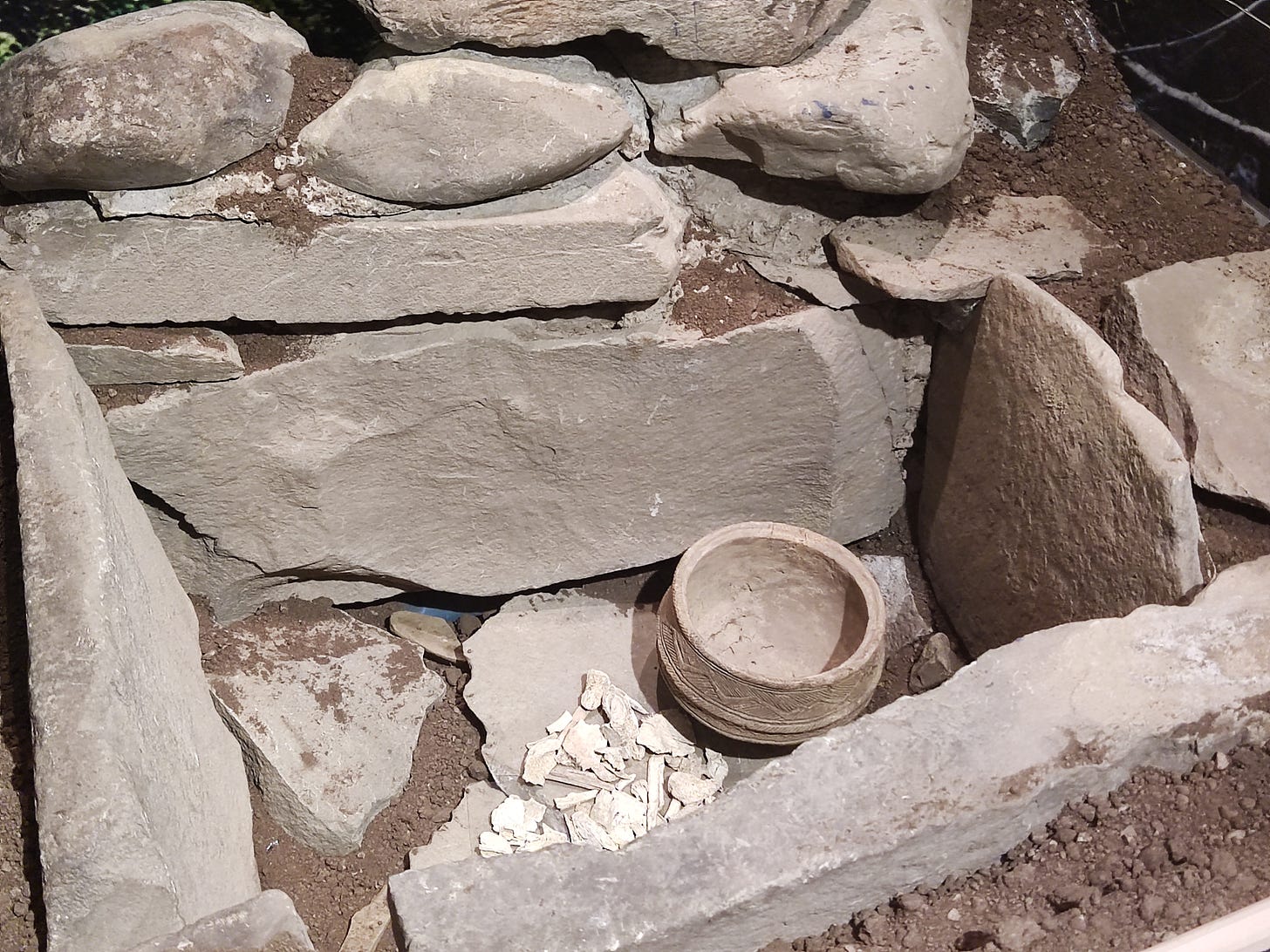
Ballybarrack Ogham Stone
This original ogham stone - not a reproduction - was a highlight of my visit. I have described elsewhere how ogham stones have been reused in the construction of medieval churches,2 in this instance the stone had been reused in the construction of a souterrain, which is where it was discovered:
This is the present location of this stone, which is on display in the County Museum, Dundalk. It was discovered in 1977 in the course of an excavation of a souterrain (LH007-072005-) where it was used as a lintel (see LH007-072006-). 'The top has been broken off, probably as part of the appropriation for use in the souterrain. Though incised very finely the consonants are legible but the vowel notches were not cut very deeply and many are uncertain (indicated here by lower-case or a dot). The inscription reads up both angles as follows: Left angle: MAQI CORaBiR MaQi? TAN.b/l ... Right angle: NeTa SaLaGIa MAQi MuCoi … (McManus 1997, 76, no. xvii).
Compiled by: Nora White
Date of upload: 12 February 2017References:
McManus, D. 1991 A guide to ogam. Maynooth: Monographs 4. Maynooth. An Sagart.
Text Copyright Government of Ireland/National Monuments Service. Reproduced from the Historic Enviroment Viewer under CC BY 4.0.
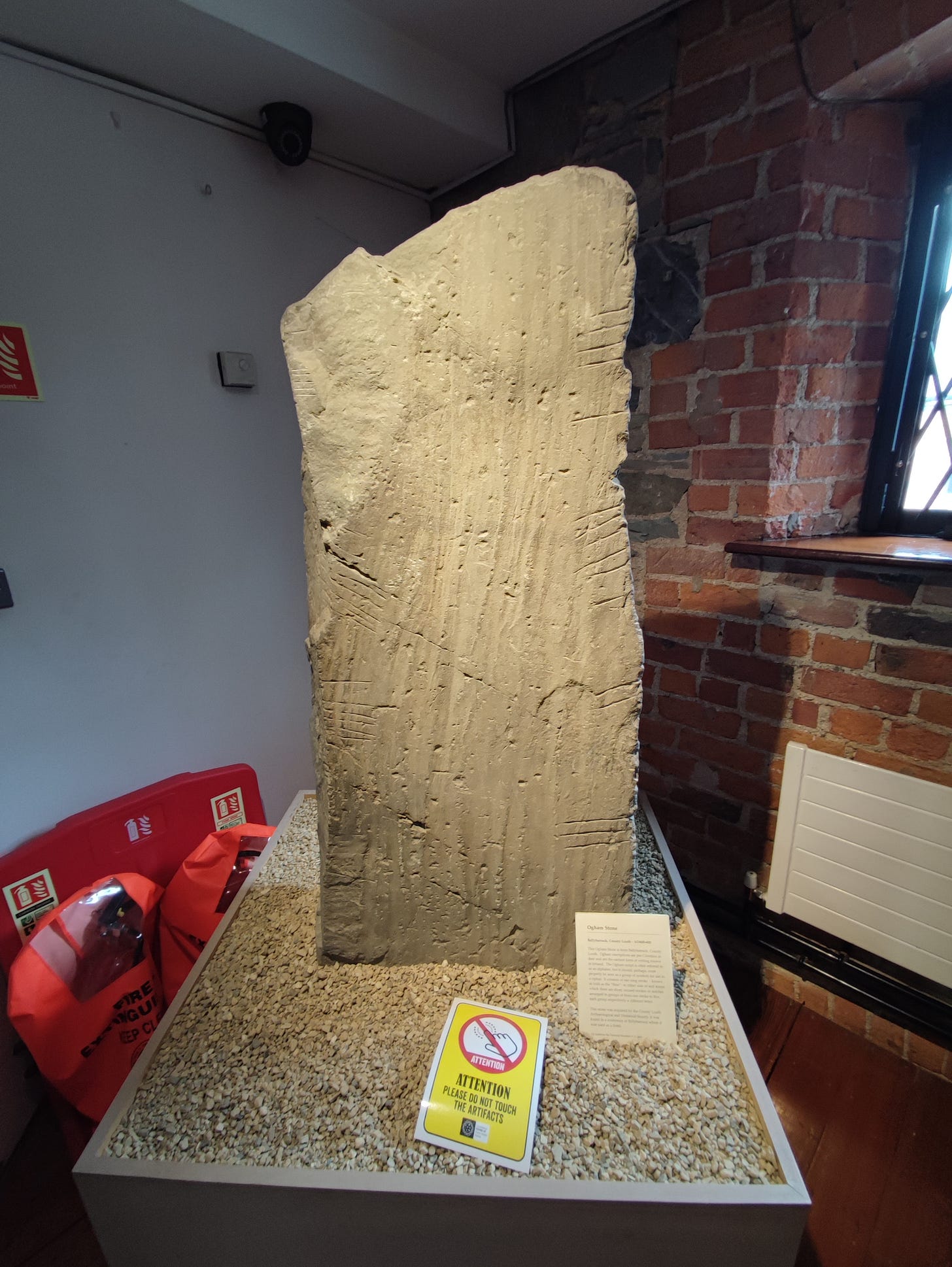
Monasterboice Cross Fragment and Cross-slab
High crosses will be familiar to most readers (I have a piece on high crosses elsewhere on this site3) as will the fantastic Monasterbouce monastic site (also located in Co. Louth). The County Museum houses a number of items from Monasterboice, including a portion of a head of a high cross (Figure 9), and also a cross-inscribed slab (Figure 10). A suggested date of around the 10th century is given for both.
The cross fragment was discovered sometime in the early decades of the 20th century by gravediggers at work in the graveyard at Monasterboice. It is 28cm wide, 25cm high and approx 10 cm thick. Roe writes that these dimensions suggest that the original full cross would have been around 2 meters in height. Roe describes the cross fragment as follows:
On one side is the Crucified Christ. His hair is thick and bushy and He is depicted as young and beardless. The upper part of His body is bare and He seems to have worn a art-like loincloth. Above His head are the remains of the feet and part of the legs of a canding figure; possibly those of an angel as occurs on the Crucifixion on the east head of the cross at Termonfeckin. The space between Christ's right hand and the end of the carm is filled by single-strand interlacing with angular corner loops.
The other wide side shows an abstract design, consisting of a central circular medallion or low boss on which faint traces of ornament may be discerned, possibly of nning spirals in low relief. About this boss raised bands swing out to fill the hackground and extend into the arm where they may have been worked into a threefold looped knot but the surface is so worn that the detail remains uncertain. The end of the arm displays a boldly carved diagonal fret of which about one-third has scaled away.4
The cross-slab is an altogether more straightforward affair. Rectangular in shape, the cross is deeply inscribed.
Barnewall Brass Memorial Plaque
This plaque captured my attention - it is very impressive in person. Commemorating members of the Barnewall family, it was kept for many years in the old Siena Convent in Drogheda.
The County Museum explains in a Facebook post the theory that it ended up in the Siena Convent because of an assumed association of Sir Oliver Plunkett of Rathmore (named on the brass) with St Oliver Plunkett. St. Oliver Plunkett’s relics were kept for many years by the Dominican Nuns of the Siena Convent in Drogheda.
Later, the plaque came into possession of the County Louth Archaeological and Historical Society who have donated it to the County Museum for display. This same Facebook post5 gives a translation of the text on the plaque:
D. 0. M. I IN MEMORIAM PATRICII BARNEWALL DE CRICKS I TON EQUITIS ET
MARGARETIE UXiS El FILIiE PAT” BARNE WALL DE FJELDSTON EQtIS EX ANNA
LUTTEREL uxe Els. RICARDI BARNEWALL ARMIGER PAT” PRiED EX
MARGt pRDt’ FILII ET ELJZABETH}E UXiS Els FILIE OLI I VERO PLUNKETT DE
RATHMORE EQtls EX [next part is illegible] UX’ EIUS PATRICII BARNEWALL
BARON(o?) I RIC’’ PRIEDt’ EX ELJZ PRiED FILTI OBIIT 21JUN11 1624 ET CATHERI
I NIE FLEMING ux’ Els FILL’E BARONIS DE SLANE EX ELEONO(RA ?)
FITZGERALD ux’ EJUS RICARDI BARNE WALL, BART PAT1’ PRIED EX CATA
PRIED FILII OBJIT 6JUL11 1679 ET IULI}E UXIS E(IS) I FILUE GERALDI AILMER DE
DO NADEA. BART EX JULIA NUGENT (?) EIS I PATRICIUS BARNEW(ALL?) I
(DE?) CRICKSTON BART ET IOA(N?) (?) EQS RIC & IULIAE FILII (?) (D.O.M.
This has been translated as:
In memory of Patrick Barnewall of Crickston, knight, and of Margaret his wife, daughter of
Patrick Barnewall of Fieldstown, knight, by Anna Lutterel his wife; of Richard Bamewall
Esquire, son of Patrick and Margaret aforesaid, and of his wife Elizabeth, daughter of Oliver
Plunkett of Rathmore, knight, and of his wife (illegible); of Patrick Barnewall, baronet, son of
Richard and Elizabeth aforesaid, who died on 21 June 1624, and of his wife Catherine
Fleming, daughter of the 16th (?) Baron of Slane by his wife Eleonor Fitzgerald; of Richard
Barnewall, baronet, son of Patrick and Catherine aforesaid, who died on 6 July 1679, and of
Julia his wife, daughter of Gerald Aylmer of Donadea, baronet, by his wife Julia Nugent;
(Erected by) Patrick Barnewall of Crickston, baronet, and Joan (Barnewall), children of Sir
Richard and Julia (aforesaid).)
The above are just a handful of exhibits on display in the museum - I would strongly encourage you to visit if you can.
Finally, I’d like to wish you all a happy new year and thank you for your support and encouragement over the course of the last 12 months, both here on the site, and on Facebook, Instagram, and Twitter. it is greatly appreciated.
Roe, Helen M, Monasterboice and its Monuments, CLAHS 1981 pg 67.

